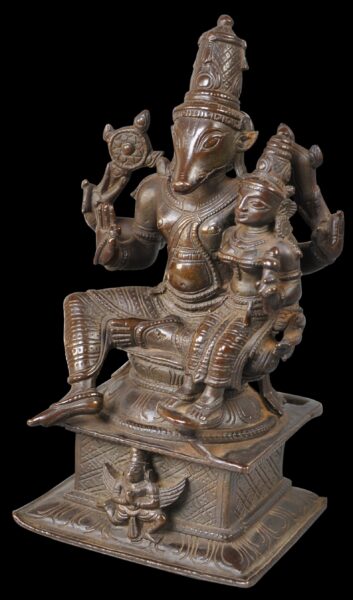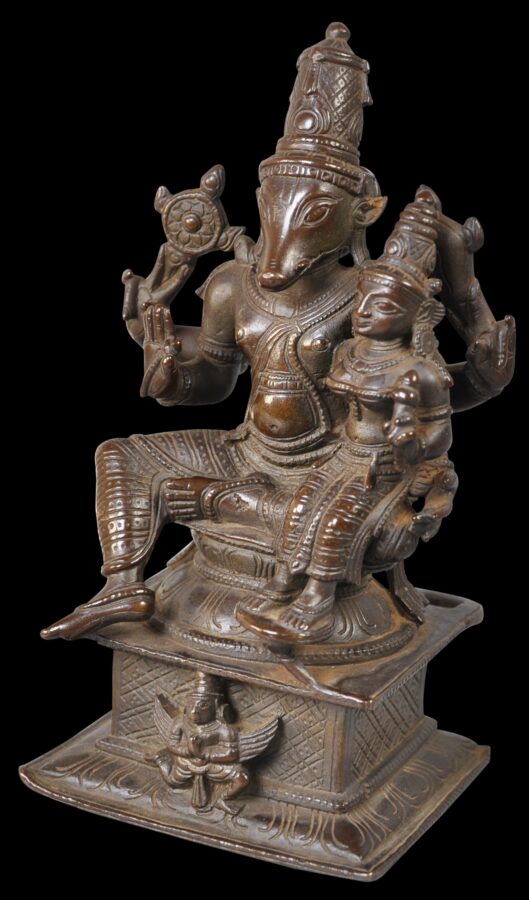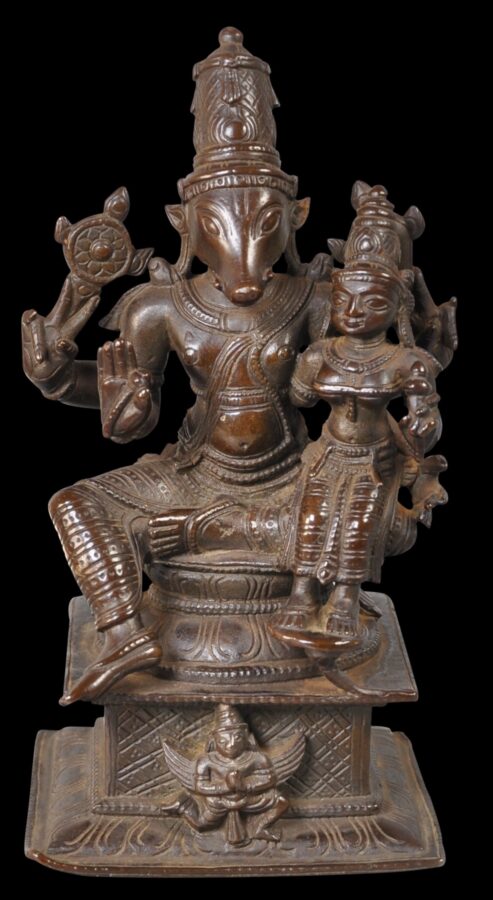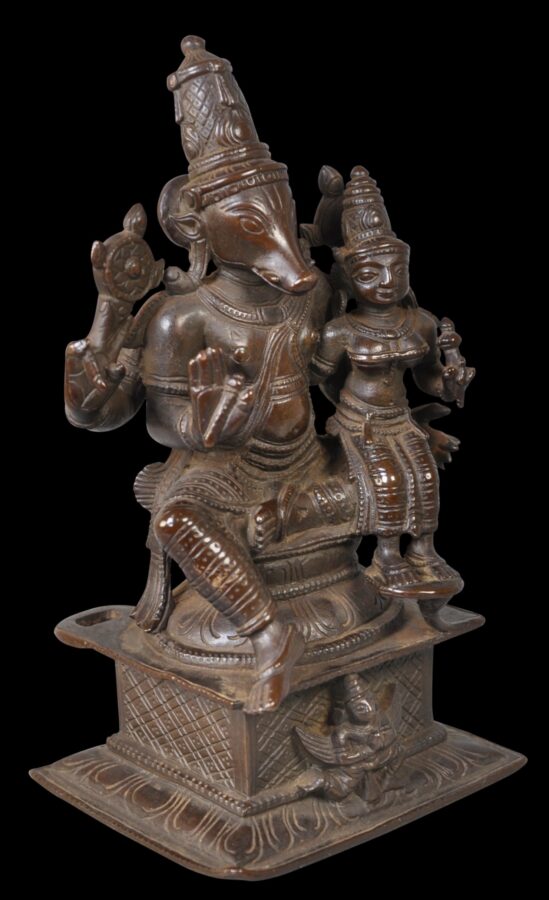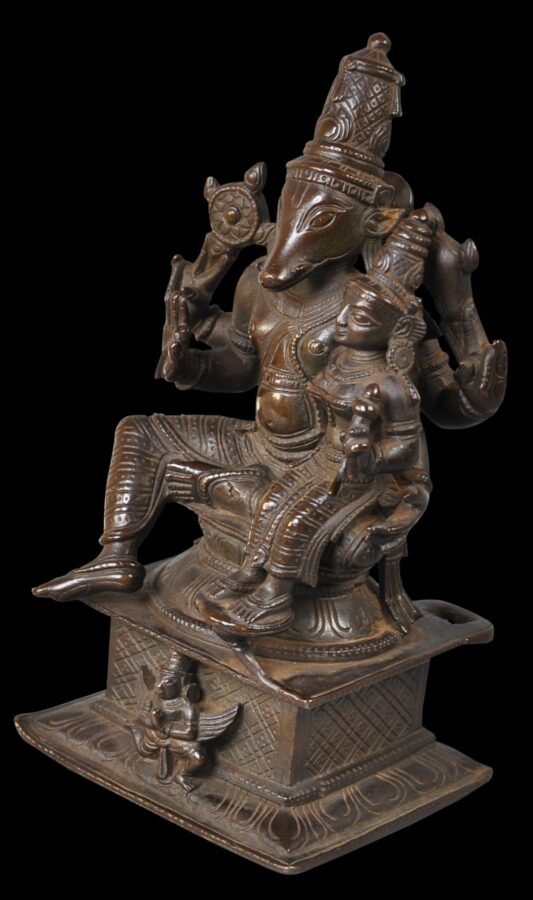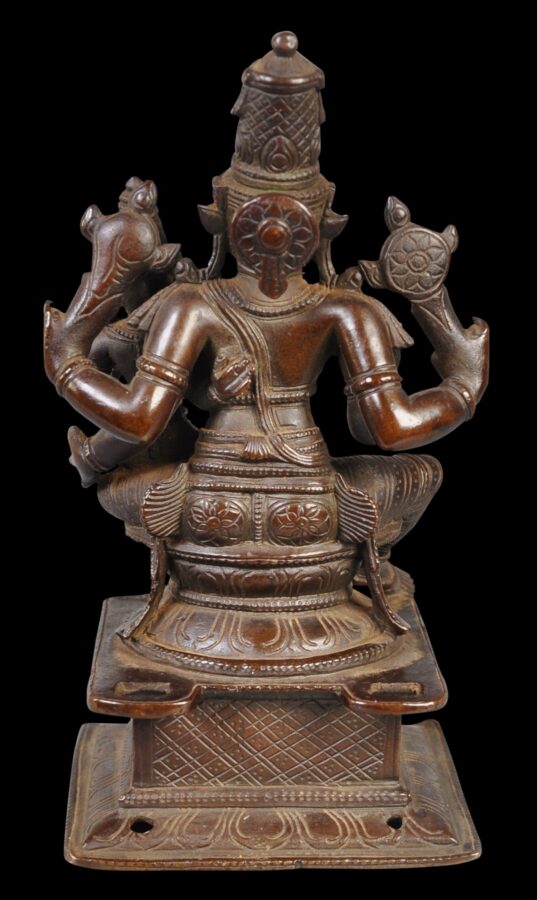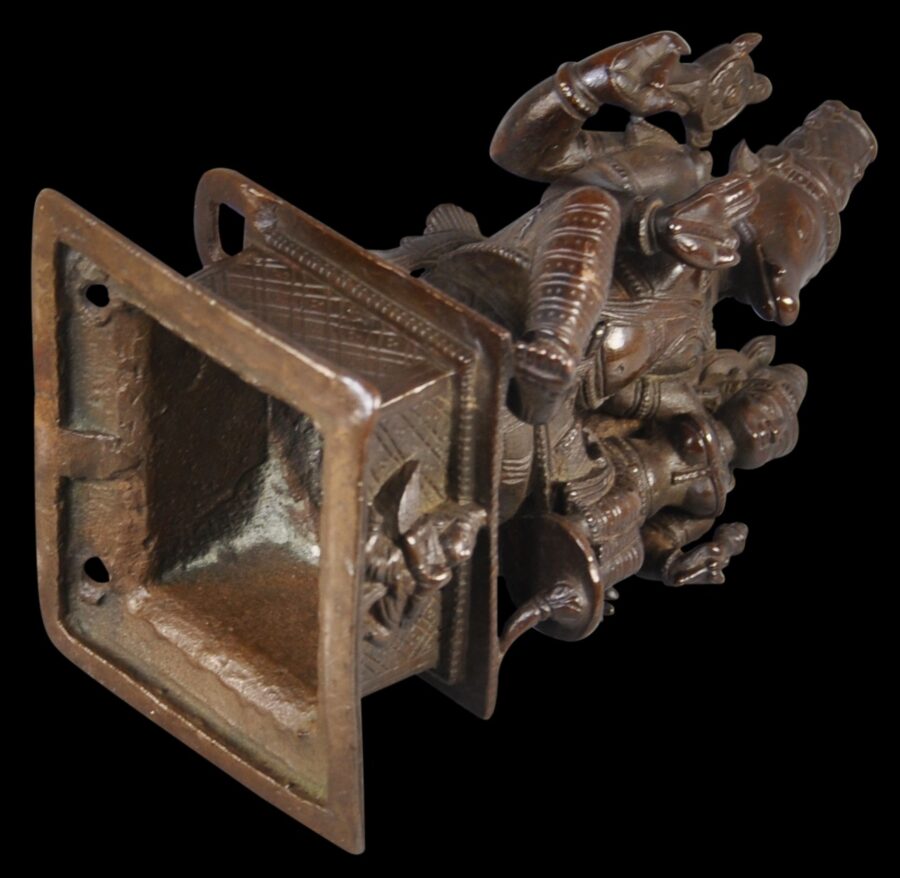This fine and good-sized cast bronze image of Varaha, shows the boar headed avatar of Vishnu seated in virasana on a lotus pedestal on tiered, square plinth with one of his consorts Lakshmi (she holds an identifying lotus) on his left thigh.
Varaha is shown with four arms and holds in the upper two, two of his (Vishnu’s) customary attributes, a flaming cakra wheel, and a conch. (shanka). Both he and Lakshmi wear striped dhotis, and both have high, tapering crowns or headdresses.
The lower left hand of Varaha wraps around Lakshmi’s lower back to upport her, and her small right hand rests on Vahara’s back.
There are various stories of how Vahara came to exist and what the avatar’s purpose was. The most usual is that Vishnu assumed the form of an enormous boar to rescue the earth from the ocean, by diving into the ocean to retrieve the earth and then by subsequently killing the kidnapper-demon Hiranyaksha. The choice of a boar might seem odd but in fact, boars were seen in India as fast, strong and brave.
The reverse of the image has a pair of holes in which a backing plate or aureole would have been supported but as is usual, this is no longer present.
A small image of Garuda, Vishnu’s vahana or celestial means of transport, with large out-stretched wings has been cast onto the front of the plinth on which Vahara sits. This is an unusual but pleasing detail.
Vishnu’s other avatars are:
Matsya, the fish-avatar who saved Manu, the creator of mankind, from the great deluge and rescued the Vedic scriptures by killing a demon.
Kurma, the tortoise avatar, who helped the other gods during the Samudra Manthan or the churning of the ocean of milk.
Varaha, the boar avatar, who rescued the earth from the ocean, by killing the kidnapper-demon Hiranyaksha.
Narasimha, the half man-half lion avatar, who killed the tyrant demon-king Hiranyakashipu, to rescue the demon’s son Prahlada, who was a Vishnu devotee.
Vamana, the dwarf avatar, who defeated the demon-king Bali.
Parashurama, axe-wielding sage who killed the thousand-armed King Kartavirya Arjuna.
Rama, the king of Ayodhya and the hero of the Hindu epic Ramayana.
Krishna, the king of Dwarka, an important character in the Bhagavata Purana and the Mahabharata and a reciter of Bhagavad Gita.
Gautama Buddha, although it might also be Balarama, the elder brother of Krishna. Balarama is sometimes considered a Dasavatar, in place of the Buddha.
Kalki, the destroyer of darkness, who is expected to appear at the end of the Kali Yuga.
The bronze here is in excellent condition and has a rich, dark chocolate patina.
References
Cummins, J. (ed.), Vishnu: Hinduism’s Blue-Skinned Savior, First Center for the Visual Arts/Mapin Publishing, 2011.
Guy, J., Indian Temple Sculpture, V&A Publications, 2007.
Pal, P., Indian Sculpture, Volume 2 – 700-1800, Los Angeles County Museum of Art, 1988.


